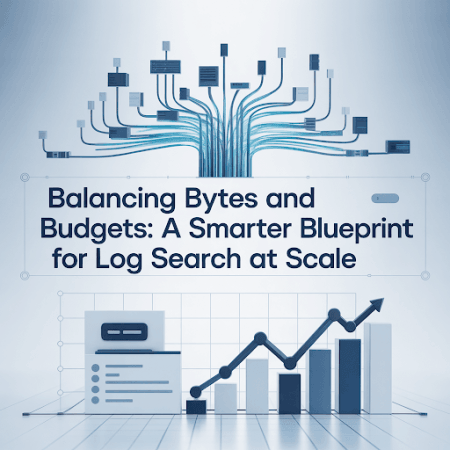
In this digital era, Rahul Singh Thakur, a seasoned systems architect and recognized thought leader in observability solutions, leverages his deep expertise to tackle some of the most critical challenges facing cloud-native systems today.
Rethinking Log Search in a Data-Heavy World
As distributed systems generate ever-expanding volumes of logs, the need for efficient and scalable log search architectures becomes more urgent. Traditional solutions falter when it comes to handling multi-tenant environments systems where different users share infrastructure. These setups promise efficiency but often compromise performance, security, or cost. The paper authored by him introduces a breakthrough architecture that harmonizes these conflicting demands, reshaping how observability platforms can function at scale.
From Fragmentation to Fluidity: Overcoming Design Constraints
Existing systems often force architects to choose between security and efficiency. Commercial platforms bring vendor lock-in and rigid pricing; self-hosted solutions demand extensive maintenance; and widely-used engines like Elasticsearch falter under the pressure of multi-tenancy. The proposed design sidesteps these pitfalls through a tailored architecture that emphasizes dynamic scalability, modular controls, and performance-centric innovation.
Modular Intelligence: Core Components That Adapt
A suite of interconnected services drives innovation: Cluster Provisioning cuts infrastructure costs by 35%, while Intelligent Routing minimizes cross-cluster load. The User Migration Service tackles the "noisy neighbor" issue. Throttling and Resource Control enforce fairness by usage entitlements, and the Entitlement Service ensures resource allocation follows policy.
Guardrails Built-In: Isolation Without Isolationism
Security remains non-negotiable, particularly in multi-tenant systems. The new architecture opts for index-level isolation, a strategic middle ground that maintains data integrity without ballooning resource requirements. Access control is tightly managed to avoid cross-tenant data leakage while ensuring operations remain performant.
Speed Meets Scale: Performance Gains Without Compromise
The system's performance toolkit is robust. From asynchronous ingestion that decouples log collection from querying, to sharding strategies and distributed query execution, every feature is designed to keep search responsive, even when data exceeds hundreds of terabytes. Notably, caching and query pre-aggregation play vital roles in trimming latency while maximizing throughput.
More for Less: Cost Reduction by Design
This architecture optimizes cost with tiered storage, cutting expenses by up to 70%. Automated lifecycle management ensures compliance. Auto-scaling and query caching reduce compute costs by 40%. Leveraging reserved and spot instances further boosts savings. A resource-based billing system enhances transparency, helping tenants adjust usage, often lowering consumption by 20–30%.
Metrics That Matter: Quantified Gains
A detailed analysis reveals the payoff of these innovations. Compared to unoptimized multi-tenant setups, the proposed architecture shows:
- Sub-second query performance success rate increased from 27% to 68%
- Query latency reduction by more than 60%
- Storage cost decreases to as little as 30–45% of traditional costs
- Administrative overhead cut by up to 55%
(As visualized in the table on page 3 and graphically reinforced on pages 5 and 7, these results mark a dramatic improvement across operational, financial, and technical fronts.)
A Roadmap to Resilience
The value of this architecture lies in its ability to adapt. Workloads change, tenants grow, data surges but this system evolves accordingly. With integrated controls for isolation, performance, and resource allocation, it offers a resilient backbone for future-facing observability platforms.
By solving the notorious "noisy neighbor" dilemma and ensuring secure, scalable access to vast log repositories, this blueprint is poised to influence how modern infrastructure teams think about shared systems.
In conclusion, Rahul Singh Thakur presents an architecture that brings clarity to a digital landscape marked by complexity and scale. His approach to log search is structured, cost-effective, and high-performance, designed not only to meet current demands but also to anticipate and accommodate the challenges of the future.









